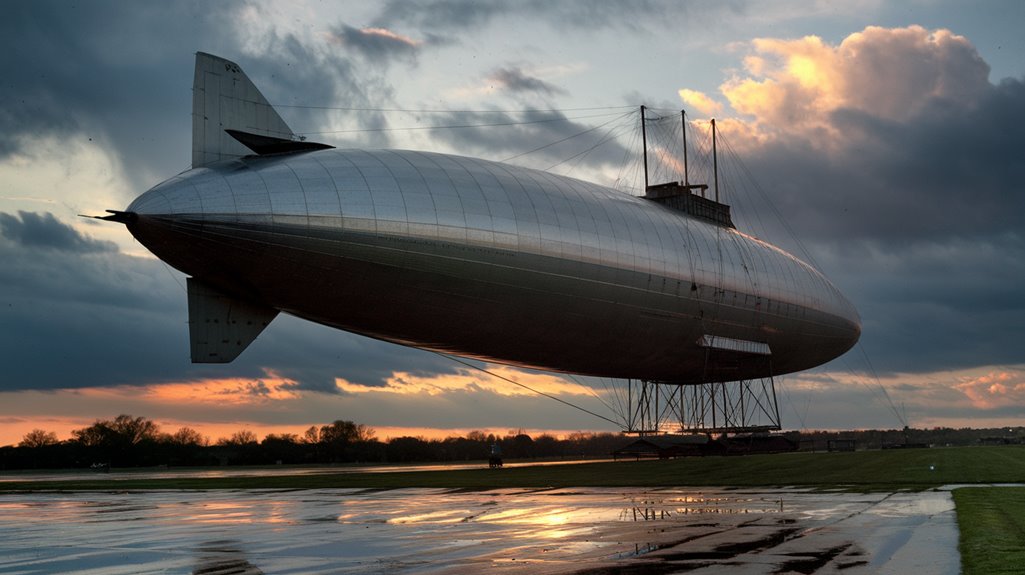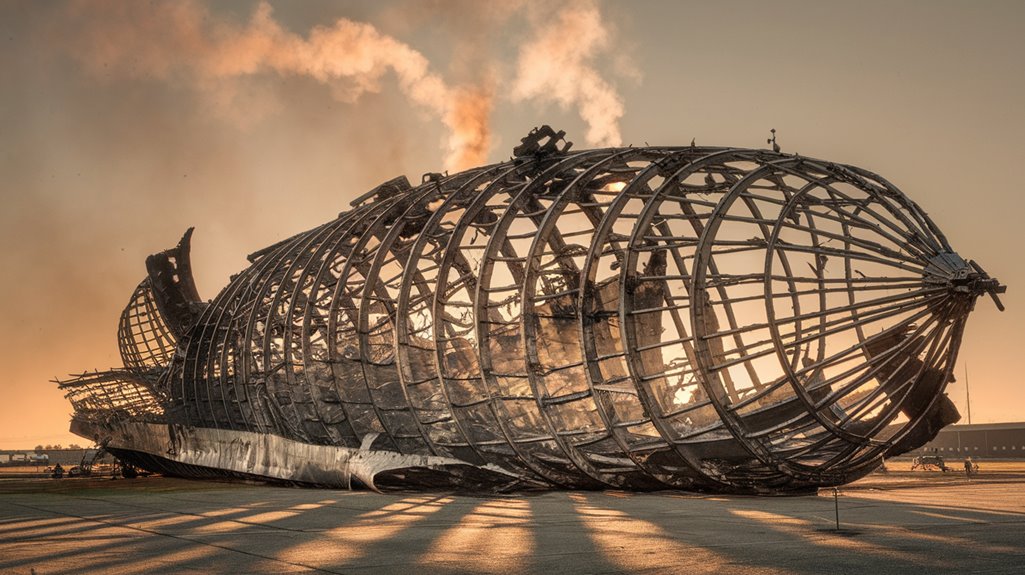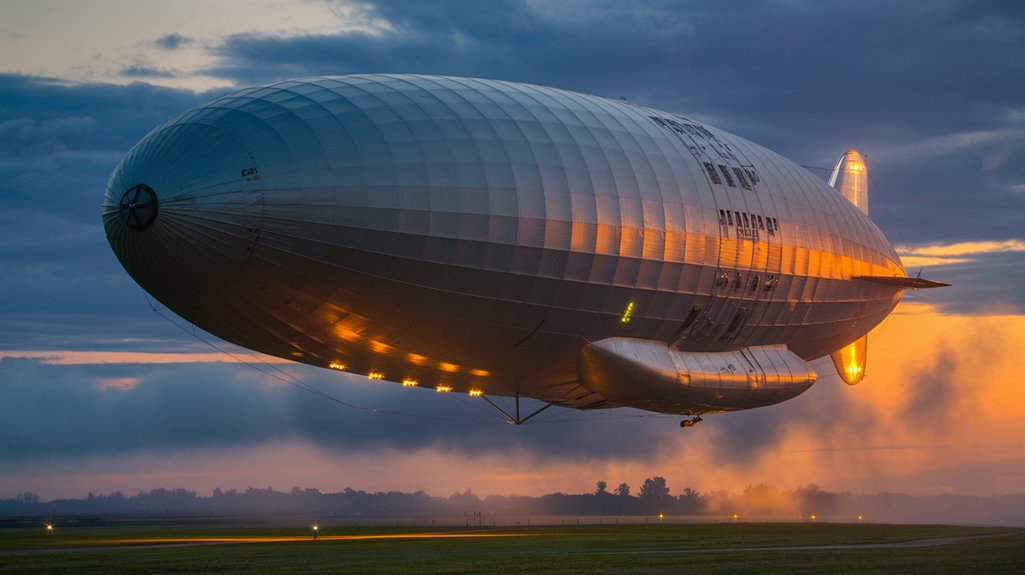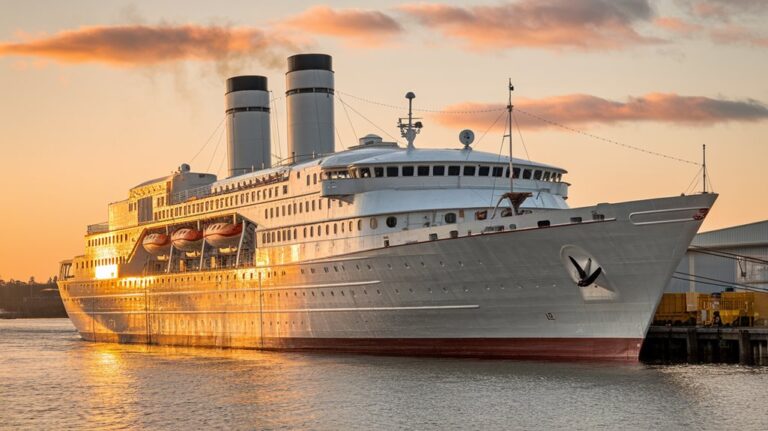One Airship Crash That Ended the Zeppelins’ Golden Age
Have you ever wondered how a single moment can transform an entire era of transportation history? You're about to discover how the Hindenburg disaster, lasting mere minutes on that fateful May evening in 1937, didn't just destroy a magnificent airship—it shattered humanity's dreams of lighter-than-air travel. While you've likely seen the haunting footage of the flaming zeppelin descending from the New Jersey sky, there's more to this story than the iconic newsreel and that famous cry of "Oh, the humanity!" The true impact of this disaster reaches far beyond the twisted metal and lost lives, reshaping the future of aviation forever.
The Fateful Landing

After battling thunderstorms and headwinds that delayed its arrival by 12 hours, the Hindenburg approached Lakehurst Naval Air Station on the evening of May 6, 1937.
As you'd imagine the landing sequence, picture the massive airship descending from 650 feet to execute a sharp S-turn, adjusting its position against the gusty conditions.
At 180 feet, the crew dropped landing lines to ground handlers below who'd help guide the vessel to its mooring mast.
Rain began to fall as the public spectacle unfolded, drawing significant attention from onlookers and media crews at the scene.
You might've noticed something was wrong when ground crew members spotted an unusual "wave-like fluttering" beneath the ship's fabric covering.
The airship's aluminum-coated fabric exterior gave it a distinctive silvery appearance that had made it instantly recognizable during its service.
Though the fire's exact cause remains debated, what happened next was catastrophic – the Hindenburg burst into flames while attempting to dock, leading to a devastating chain of events that would unfold in just over half a minute.
Legacy of the Hindenburg Disaster
The 32 seconds of inferno that consumed the Hindenburg left an indelible mark on aviation history that stretched far beyond the scarred grounds of Lakehurst.
You'll find that public perception of airships plummeted almost as quickly as the burning wreckage, ending an era of luxury air travel that had captivated the world's imagination.
The German company DZR ceased all operations by 1940, marking the definitive end of commercial zeppelin travel.
At nearly 245 meters long, the Hindenburg's massive size had once symbolized the pinnacle of airship engineering achievement.
The disaster accelerated the aviation industry's shift toward fixed-wing aircraft, as technological advancements in airplane design offered faster, safer alternatives.
While investigations pointed to an electrostatic discharge igniting leaking hydrogen as the likely cause, the damage to airship travel's reputation was irreversible.
Today, you'll only see airships in niche markets like advertising, though there's renewed interest in their potential for cargo transport and sustainable aviation solutions.










